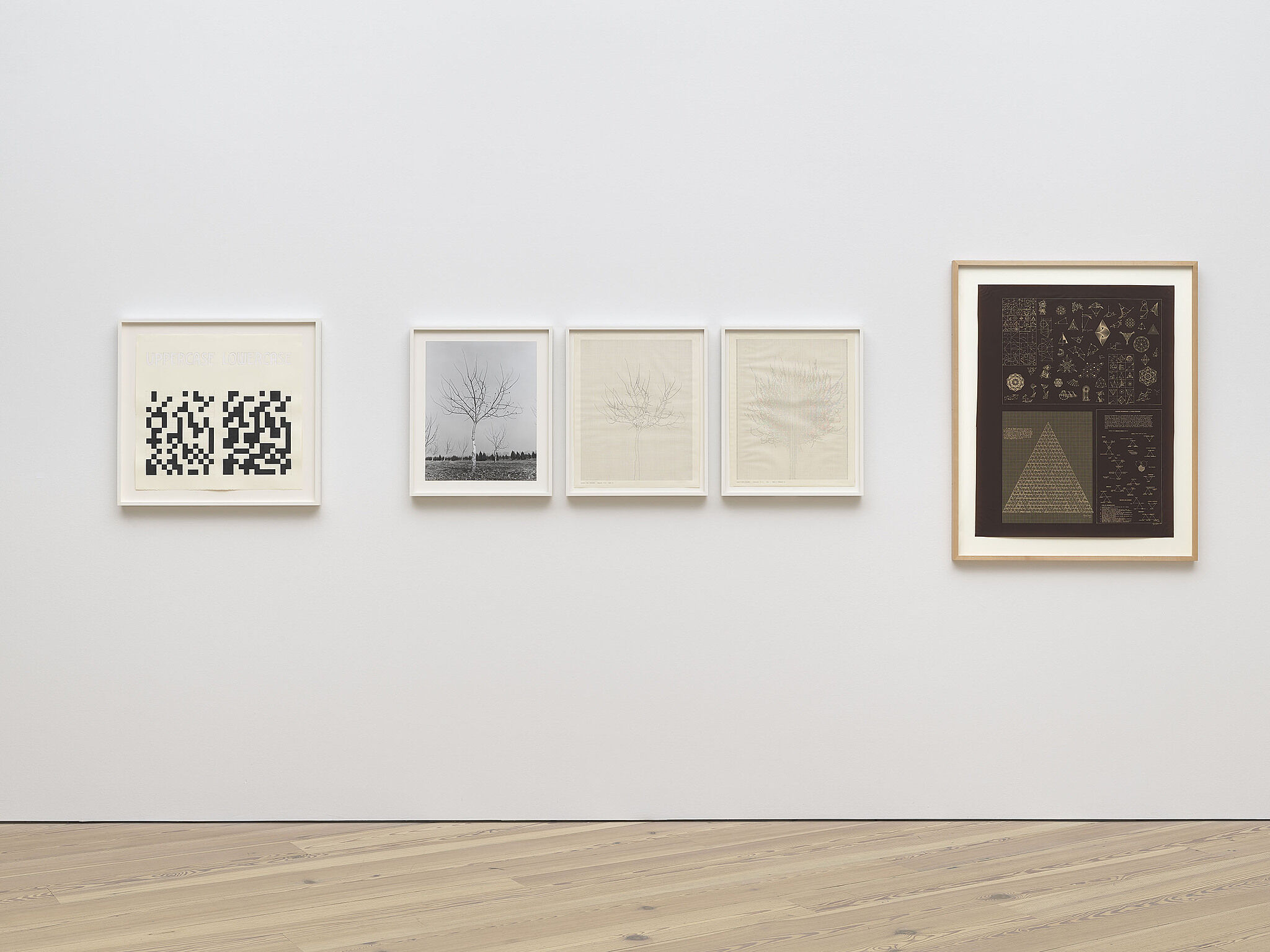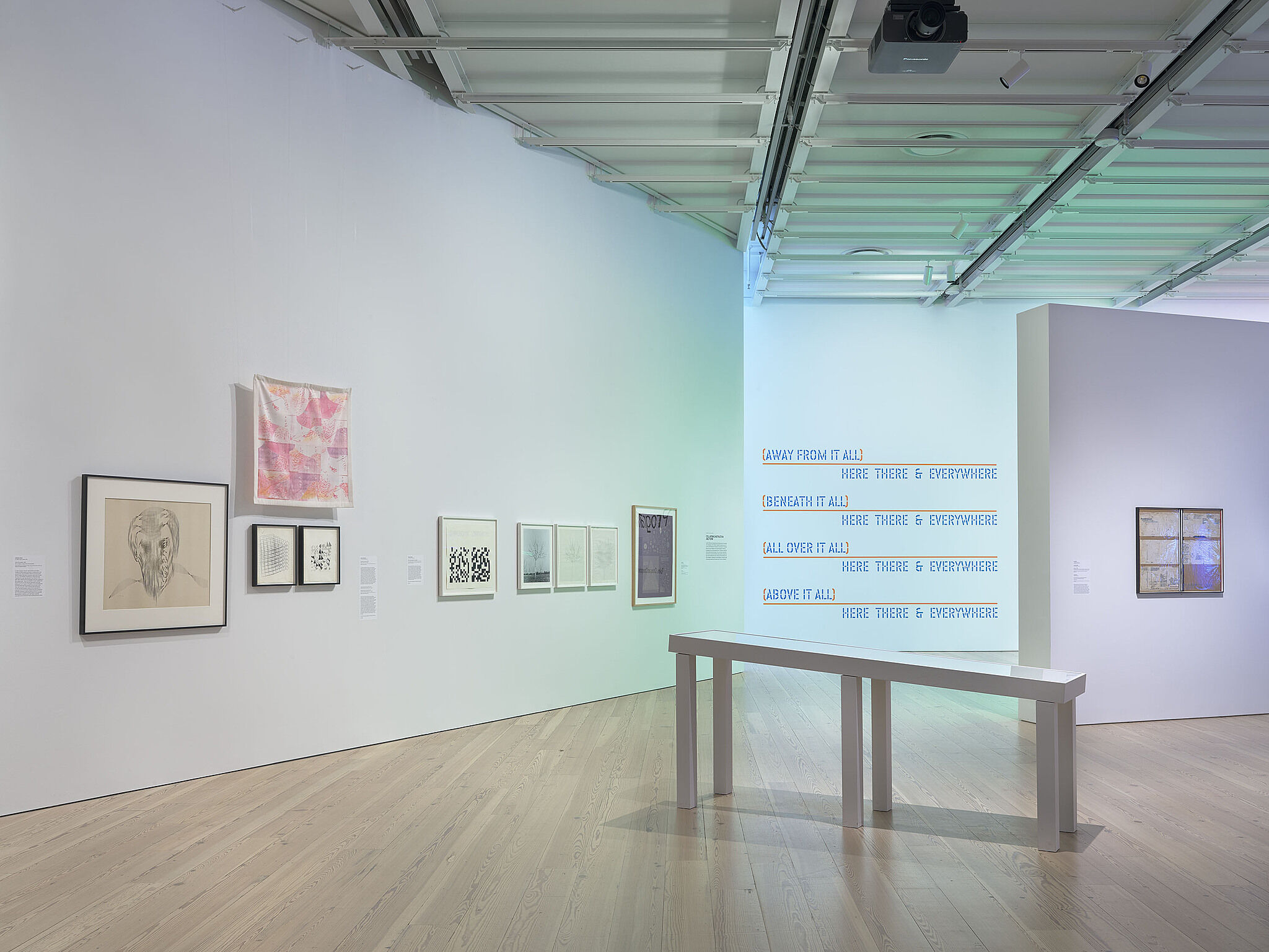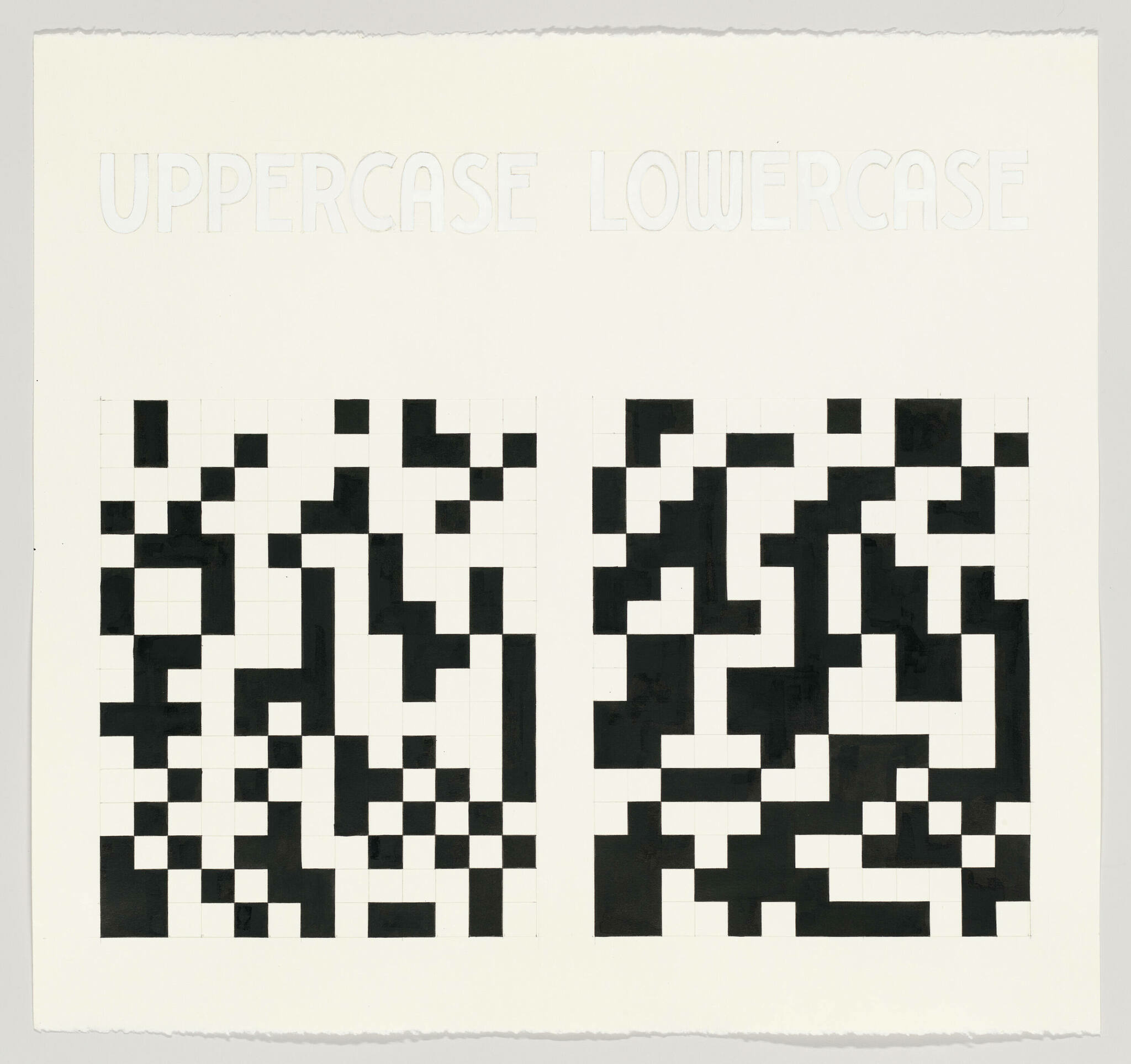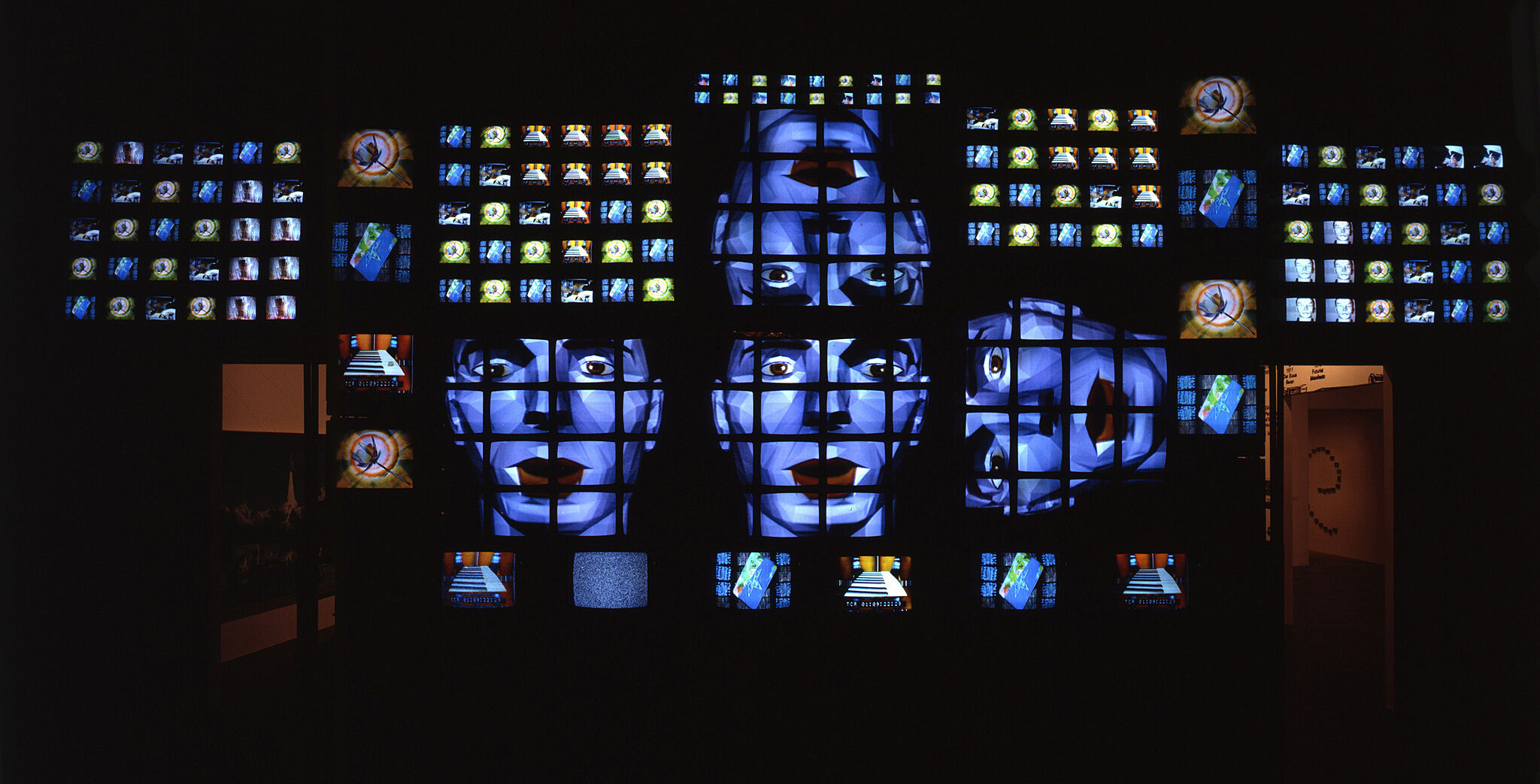Not on view
Date
2005
Classification
Drawings
Medium
Ink, opaque watercolor, and graphite pencil on paper
Dimensions
Sheet (sight, irregular): 22 5/16 × 23 3/4in. (56.7 × 60.3 cm)
Accession number
2010.79
Credit line
Whitney Museum of American Art, New York; purchase, with funds from the Drawing Committee
Rights and reproductions
© Tauba Auerbach
Audio
-
Tauba Auerbach, Binary Uppercase/Lowercase, 2005
In Programmed: Rules, Codes, and Choreographies in Art, 1965–2018 (Spanish)
0:00
Tauba Auerbach, Binary Uppercase/Lowercase, 2005
0:00
Clémence White: Auerbach se interesa por los sistemas lingüísticos y la traducción. Piensa en el lenguaje y en cómo se utiliza, pero también piensa en los caracteres del alfabeto. Esta pieza, titulada “Mayúsculas/minúsculas binarias” se traduce al alfabeto inglés en una mayúscula binaria a la izquierda, y una minúscula a la derecha.
Narrador: El lenguaje binario es un lenguaje compuesto por unos y ceros, y es la base de la programación informática. Clémence White es curadora asistente en el Whitney.
Clémence White: El código binario para cada letra del alfabeto inglés tiene ocho bits de largo, por lo que ella tradujo ese código utilizando su propio sistema. Para cada letra, los cuadrados negros se corresponden con los unos, los cuadrados blancos se corresponden con los ceros.
La letra "A" en binario y mayúsculas es 01000001. Entonces, los cuadrados negros son uno y los cuadrados blancos son cero. Así que es un cuadrado blanco, un cuadrado negro, cinco cuadrados blancos y después un cuadrado negro.
-
Tauba Auerbach, Binary Uppercase/Lowercase, 2005
In Programmed: Rules, Codes, and Choreographies in Art, 1965–2018
0:00
Tauba Auerbach, Binary Uppercase/Lowercase, 2005
0:00
Clémence White: Auerbach is interested in linguistic systems and in translation. She's thinking about language and how language is used, but is also thinking about the characters of the alphabet. This piece, which is called Binary Uppercase/Lowercase translates the English alphabet into binary uppercase on the left side, and lowercase on the right side.
Narrator: Binary is the language of ones and zeroes that forms the basis of computer programming. Clémence White is a Curatorial Assistant at the Whitney.
Clémence White: Binary code for each letter in the English alphabet is eight bits long, so she translated that code using her system. Black squares correspond to ones, white squares correspond to zeroes for each letter.
The letter "A" in binary in uppercase is 01000001. She is translating ones as black squares and zeroes as white squares. So it's one white square, one black square, five white squares, and then one black square.
Exhibitions
Installation photography
-


Installation view of Programmed: Rules, Codes, and Choreographies in Art, 1965–2018 (Whitney Museum of American Art, New York, September 28, 2018–April 14, 2019). From left to right, top to bottom: Manfred Mohr, Band Structures P-021-U, 1970–83; Joan Truckenbrod, Curvilinear Perspective, 1979; Joan Truckenbrod, Coded Algorithmic Drawing (#9), 1975; Joan Truckenbrod, Coded Algorithmic Drawing (#45), 1975; Tauba Auerbach, Binary Uppercase/Lowercase, 2005; Charles Gaines, Walnut Tree Orchard: M1, M2, M3, 1977; Agnes Denes, Pascal’s Triangle II, 1974; Lawrence Weiner, HERE THERE & EVERYWHERE, 1989; In vitrine: Channa Horwitz, Suite 8, 1979. Photograph by Ron Amstutz
From the exhibition Programmed: Rules, Codes, and Choreographies in Art, 1965–2018
-


Installation view of Programmed: Rules, Codes, and Choreographies in Art, 1965–2018 (Whitney Museum of American Art, New York, September 28, 2018–April 14, 2019). From left to right: Tauba Auerbach, Binary Uppercase/Lowercase, 2005; Charles Gaines, Walnut Tree Orchard: M1, M2, M3, 1977; Agnes Denes, Dialectic Triangulation: A Visual Philosophy, series #3, 1970. Photograph by Ron Amstutz
From the exhibition Programmed: Rules, Codes, and Choreographies in Art, 1965–2018
-


Installation view of Programmed: Rules, Codes, and Choreographies in Art, 1965–2018 (Whitney Museum of American Art, New York, September 28, 2018–April 14, 2019). From left to right, top to bottom: Charles Csuri, Sine Curve Man, 1967; Joan Truckenbrod, Curvilinear Perspective, 1979; Joan Truckenbrod, Coded Algorithmic Drawing (#9), 1975; Joan Truckenbrod, Coded Algorithmic Drawing (#45), 1975; Tauba Auerbach, Binary Uppercase/Lowercase, 2005; Charles Gaines, Walnut Tree Orchard: M1, M2, M3, 1977; Agnes Denes, Dialectic Triangulation: A Visual Philosophy, series #3, 1970; Lawrence Weiner, HERE THERE & EVERYWHERE, 1989; Sol LeWitt and Lucinda Childs, Dance #4, 1979. Photograph by Ron Amstutz
From the exhibition Programmed: Rules, Codes, and Choreographies in Art, 1965–2018


